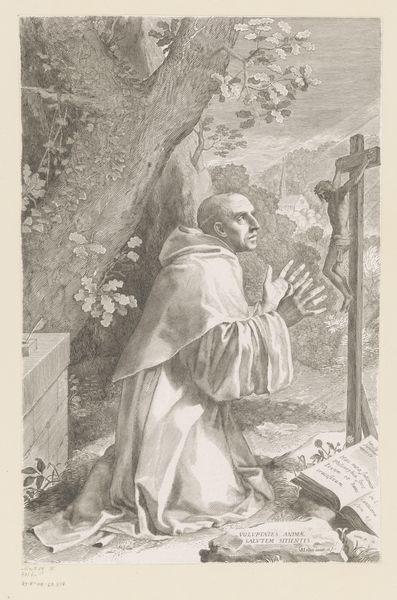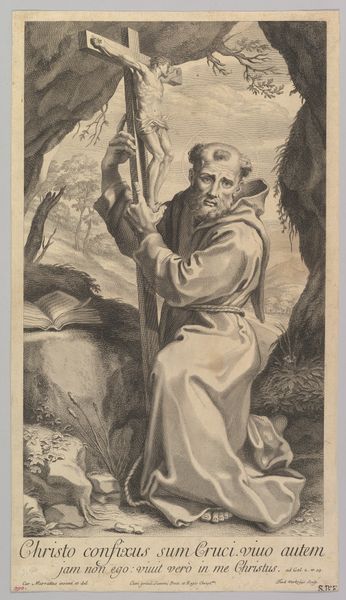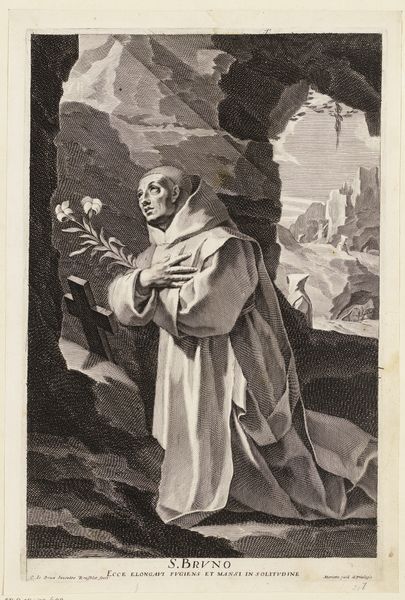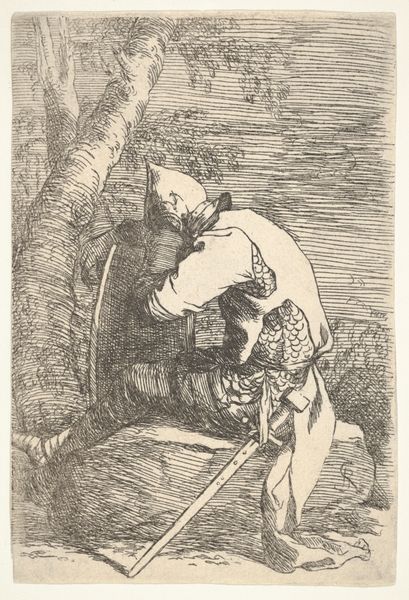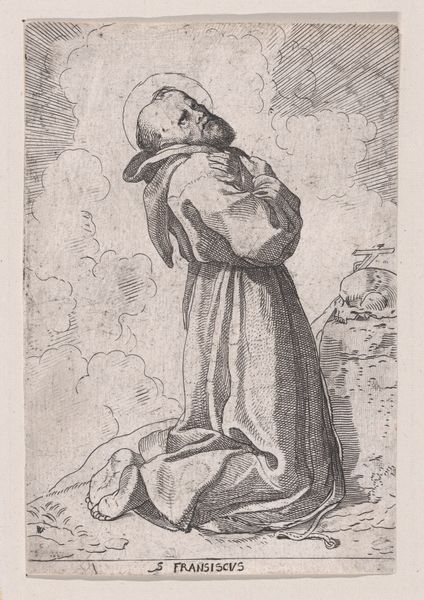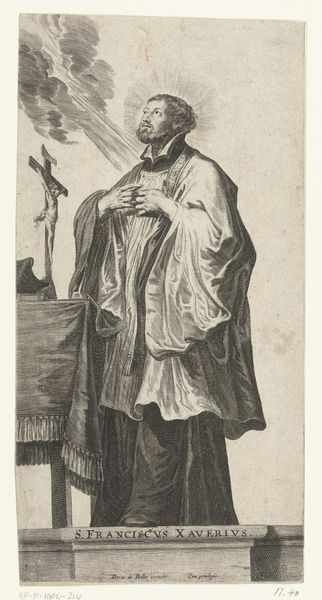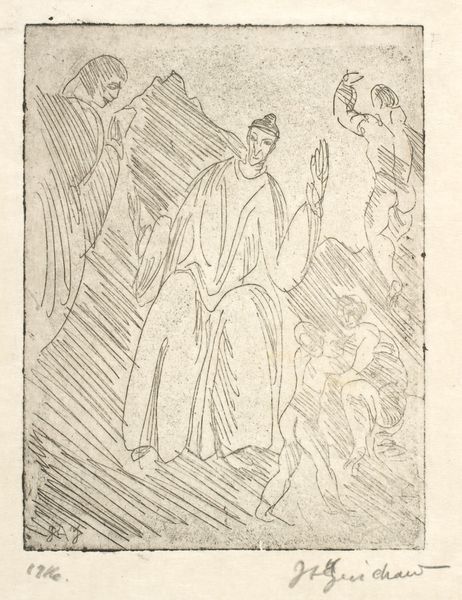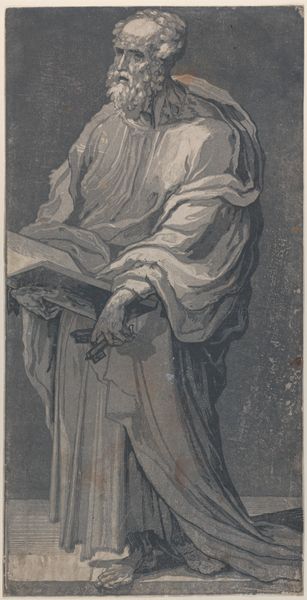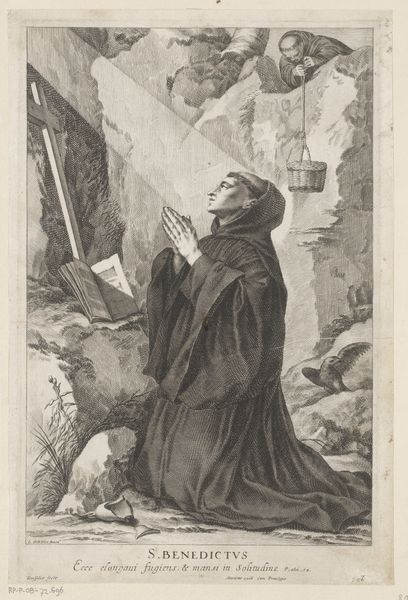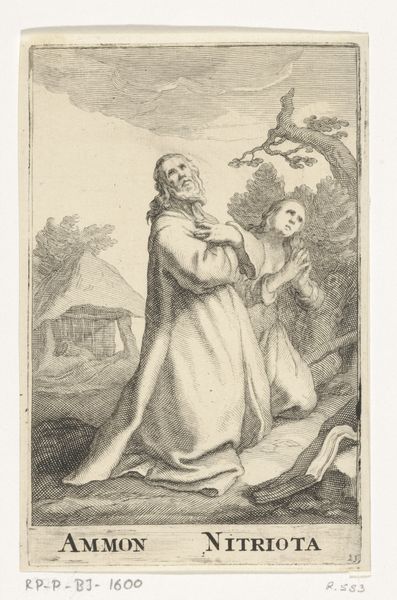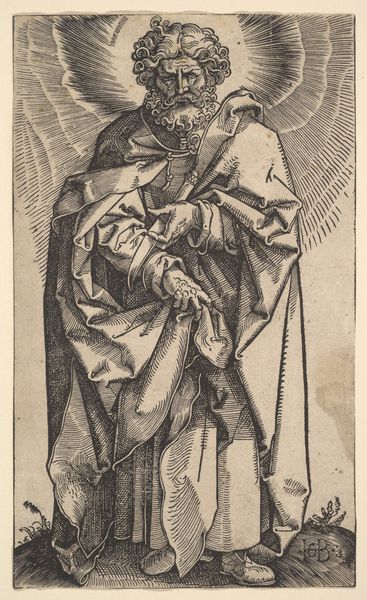
drawing, tempera, print, etching, engraving
#
portrait
#
drawing
#
narrative-art
#
baroque
#
tempera
# print
#
etching
#
landscape
#
figuration
#
pencil drawing
#
line
#
crucifixion
#
history-painting
#
engraving
Dimensions: sheet: 17 1/4 x 11 5/16 in. (43.8 x 28.7 cm)
Copyright: Public Domain
Curator: The starkness is immediately arresting, isn’t it? Editor: It's… intense. That unwavering gaze fixed on the crucifix; there's an almost unnerving vulnerability in his posture, kneeling there so exposed. A melancholic devotion seems to emanate. Curator: Indeed. This is Claude Mellan's "St. Bernard Kneeling Before a Crucifix," dating roughly from 1650 to 1660. The etching exemplifies Mellan’s renowned skill with the burin, achieving a remarkable tonal range with just a single, continuous line in many areas. It’s a study in controlled emotion, really. Bernard, a figure strongly associated with the Cistercian Order, a group that underwent different reformations at this time... the moment captures devotion, contemplation, a negotiation of change and permanence. Editor: A single line? That's almost… obsessive! Is it meant to mirror his devotion or something? That sustained mark-making, all those etched prayers almost... The single line adds such an amazing quality to the final print. A sort of trembling vulnerability and resilience at once. Like a tear held back. Curator: Precisely! The unbroken line serves to emphasise his spiritual focus, as a technical demonstration and metaphor. Note how his garments are detailed--the folds cascade--creating a sense of dynamic movement, against the stillness of his posture. Consider too how that dynamic play evokes the shifting ideological terrains within the Church at the time. His unwavering gaze tells us much about fidelity. Editor: And the landscape around him—the twisted branches of the old growth tree… those subtle markers that ground and constrain at once… Does all this linear detailing work together to signify something? It makes me want to find symbolism in the very nature of line itself—the thin line between belief and doubt, devotion and despair. Am I reading too much into it? Curator: Not at all! That reading is wholly appropriate here. These landscape features are carefully considered elements. Notice, even, that the inscription on the book seems so deliberate. It’s not accidental at all. Mellan understood, and deftly demonstrated, the profound effect the smallest mark can have on our understanding of faith. Editor: Mellan does create a dialogue here… He poses tough questions—he doesn’t leave you with any trite answers. Curator: Absolutely. Mellan doesn't offer easy comfort; his etching is an invitation to examine one's own convictions—religious, personal, ideological… Editor: I appreciate the dedication in Mellan’s “St Bernard”, it inspires the search for more of those singular through-lines.
Comments
No comments
Be the first to comment and join the conversation on the ultimate creative platform.
